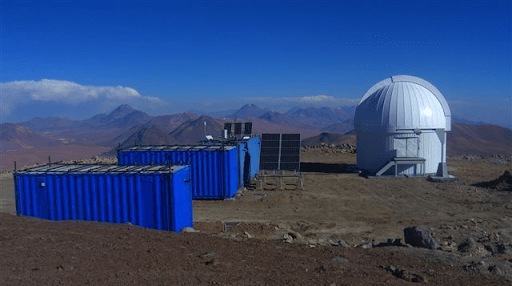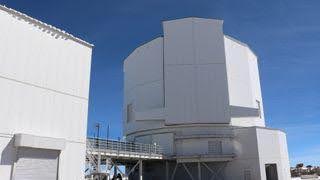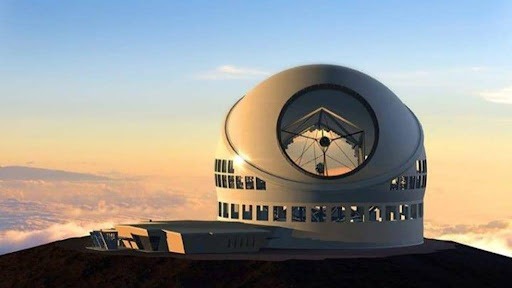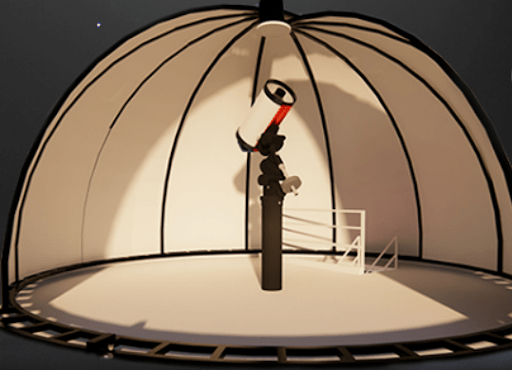At an astounding elevation of 5,640 meters (18,500 feet), the Tokyo Atacama Observatory is the world’s highest astronomical observatory, situated high in the Andes Mountains of Chile. The Atacama Desert in Chile is known for its breathtaking landscapes, extreme dryness, and one of the clearest skies on Earth. The Tokyo University of Science built this amazing facility, bringing Japanese knowledge to one of the world’s greatest stargazing places.
Construction on TAO began in 2006 and included assembling the observation and operations building in Kazo, Saitama in May 2020, disassembling it, and shipping it to Chile in 2021. The summit facility, including the enclosure, was completed in 2024. The telescope achieved its first light in early May 2024.
A Brief Overview
The Tokyo Atacama Observatory was constructed to benefit from the exceptionally clear sky and low levels of light pollution in the Atacama Desert. Because of its height, the observatory is above the majority of Earth’s atmosphere, which minimizes atmospheric interference and offers a clear view of the universe. It is ideally located in one of the driest regions on Earth, where astronomical observations are possible due to the extremely thin air and unobstructed sky.

Perched on top of the mountain, TAO is exposing itself to the rough conditions in place and was built to study them. The Tokyo University of Science did not hesitate to do it, bringing the best of modern technology to one of the world’s harshest, most remote environments.
How It Works
The observatory, which is outfitted with cutting-edge telescopes and instruments, is dedicated to the observation of far-off celestial objects and phenomena. This observatory is used by scientists to investigate a variety of topics related to the universe, including how galaxies develop, how stars behave, and the enigmas surrounding dark matter and dark energy.
TAO’s 6.5-meter optical-infrared telescope has two science instruments designed to observe the universe in infrared. One instrument, SWIMS, will image galaxies from the early universe, and the other, MIMIZUKU, will study primordial disks of dust.
Highly detailed infrared telescope data from the observatory in the Atacama Desert, managed by the Tokyo University Institute of Astronomy, is delving into the universe’s deepest reaches.
Infrared astronomy is important, as it allows observations completely impossible using visible light. The telescopes at TAO enable the detection of other dim objects, which are too cold to emit visible light, yet still active, like some distant planets, brown dwarfs, and star-forming regions.

Notable Discoveries
We now know a great deal more about the universe because of the Tokyo Atacama Observatory. Among its discoveries are the identification of hitherto unknown cosmic events and in-depth examinations of far-off galaxies. Since the University of Tokyo Atacama Observatory began in 2024, a variety of exciting discoveries have been made.
- Mid-infrared observations
TAO successfully did ground-based mid-infrared observations at 30 microns, thought to be impossible until recently.
- Imaging ionized gas
For the first time from the ground, TAO imaged ionized gas at the Galactic centre with hydrogen emission.
- Star birth nursery
It has also captured high-resolution images of the star birth nursery within the Omega Nebula, M17, which revealed a multi-component structure in the dust and gas surrounding a young star
- Be stars
The near-infrared camera on TAO has detected Paschen-α emission at 1.875 µm from Be stars within a star cluster of the Small Magellanic Cloud. TAO has also discovered new Be stars.
The Tokyo Atacama Observatory is not just an astronomical facility; it speaks of human ingenuity, perseverance, and overpowering curiosity toward the universe. Placed at one of the most extraordinary sites anywhere on Earth, TAO is now breaking all records for altitude and will open new frontiers in our quest for understanding the cosmos. Someplace high in the Andes Mountains, far above a daily care mixed with lower-altitude, high-stress life, is where the air is thin and the stars are near, and the mysteries of the universe are being slowly unravelled—one observation at a time.

DPS Space Observatory
Space India has established an observatory at DPS in Faridabad as a step towards space education. Observatory, a globally recognized astronomical solution, is an amalgam of science and sustainability, a 21st-century state-of-the-art engineering marvel driven by the fundamentals of science and technology, catering to all communities at its core.
The observatories are equipped for discovery, research, observation, collaboration, and analysis. At Space India, the astronomical observatory is established to impart astronomical experience, unlike any other program. A 360-degree learning tool for students, a photography centre for enthusiasts, and an exploration station for astronomy academia, the observatory has defied the laws of mechanics to come up with a simple yet timeless solution.

With multi-operational support, the observatory creates capacity building for scientific research as well as curriculum enhancement for schools through resources, knowledge, and experience. Backed by a legacy of astronomical excellence, space observatories integrate best practices on and off-site to manage huge volumes of data and its processing, enabling the world-leading science it promises.
SPACE Observatory is in sync with the SPACE Education, Universe in the School (UITS) Program as it enhances the K–12 learning pedagogy.
—
If you like the blog, enrol your school or yourself (k-12 student) in our School Programs or Online Programs, call us at +91-74020 74020 or write to us for any query: getintouch@space-india.com

